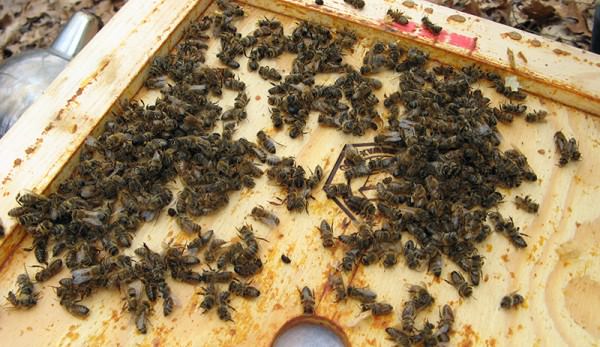
Being a beekeeper forces us to use our most acute observation skills. Honeybees are harder to read than, say, dogs for most people. We know when a dog wags its tail, it’s probably happy. We know that a growl means “Stay back!” But honeybees require us to learn a whole new language, and we use that language to learn to care for them the best way we are able. While this is by no means a complete list, here are five signs something’s just not right with your honeybees.
1. Bad Odor
Truthfully, a honeybee hive should smell nothing but sweet. A healthy one emits the warm smell of honey (obviously!) and warm wax. With a really sharp nose, you may smell the cedar or pine that comprises the woodenware and, of course, the smell of your smoker. If a hive smells bad—sour, rotten, like ammonia or something else off—start to investigate. You may have a disease, such as foulbrood, or a pest issue, such as a mice infestation. (Mice like to urinate, contributing their own less-than-pleasant aroma.)
2. Few To No Bees Present
A healthy hive is bursting at the seams with bees. If the hive seems empty, something is most definitely wrong. A hive empty of bees that previously seemed healthy is one of the ominous tell-tale signs of colony collapse disorder (CCD). Bees also abscond when their hive conditions are not to their liking, such as what happens when mice, ants, hive beetles, wax moths or other pests move in.
3. Many Dead Bees
This one’s probably pretty obvious, right? Dead bees are not a good sign. Some dead bees are to be expected, but truly, the mortician bees remove the dead members of the colony rather swiftly in a healthy hive. Bees are very clean, after all.
4. No Queen
Without a queen, a colony’s days are numbered—unless they can make a new queen successfully or you re-queen the colony. Thankfully, a queenless colony at the right time of year is not the hardest obstacle to overcome, but it may be indicative of other problems or setbacks the colony faces as a whole.
How do you know if a hive is queenless? Well, you won’t see her, despite going through the hive with a finetooth comb. Even the most thorough beekeeper can miss a queen, though, and some queens are very crafty and fast. They love to hide! A better way to find out is to check in empty cells: Brood cells with a single, healthy egg is a good indicator that the queen has been in the hive within the last 72 hours.
5. Multiple Eggs In One Cell
A healthy queen lays one egg per cell—no exception. Multiple eggs per brood cell indicates a laying worker situation, which means you don’t have a queen present. Workers have not mated and are therefore sterile—the eggs they lay are drone eggs. The simple absence of a queen is a rather quick fix, but a laying worker situation is not and will require more intervention.
Of course, the first step to knowing if a colony is sick is to know that it’s not healthy—and that means knowing what a healthy colony looks like. Watch videos online, read books, and best of all, shadow local beekeepers and get eyes on a live, healthy hive. Having a solid baseline helps diagnosing a hive that much easier.




